Seminars
Android Performance Patterns: Flow
Etienne Caron (Mr. Khan / NAID)
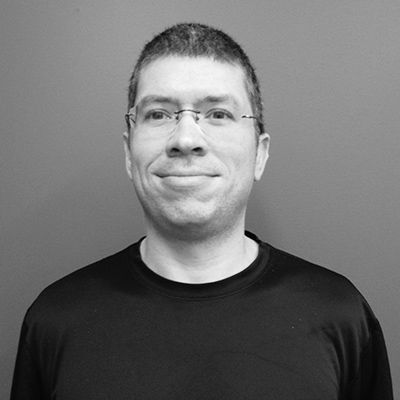
On mobile devices, tactile feedback provides a very close, personal interaction with users. Lack of speed or sluggishness compromises this feedback loop, and multiple UX studies have shown this has a very real impact on users and how they use your software.
Fluid feedback can have huge impact on getting your work noticed and adopted by users. A well crafted UI/UX can induce 'flow', or hyperfocus in your users. Something demos usually excel at provoking in viewers.
In this session, we'll leverage demoscene know-how to create rich dynamic user interfaces, combining shader rendering tricks with traditional Android UI elements. We'll also learn how to efficiently use the Android platform tools to keep your framerate at a rock-solid 60fps.
Etienne's been an active member of the Android developer community in Montreal since 2010, and has been regularly devoting time towards mentoring startups, developers and students in the mobile space. As part of the Montreal Android GDG, he organises meetups, hackathons, and gives regular talks on Android-related subjects. He's now part of the Google Developer Expert program.
He got his start in programming in the mid 80s when he started obsessing over C64 demos, and went on to organize the NAID 95/96 demoparties.
He is now Android team lead for TrueKey, Intel's digital identity manager. Previously, Etienne worked on projects ranging from high-availability stock trading software platforms, all the way to large scale municipal bike sharing systems (London's cycle Hire amongst others). He lives in Montreal with his wonderful wife and daughter.
Come take a Journey through Time and Space
Bradley Munkowitz (GMUNK)
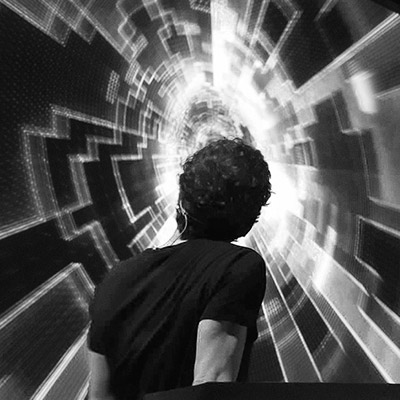
Come along and ride on a fantastic voyage with Munkowitz as he guides you through an hour of intense graphic stimulation. Together you will intimately unravel a design career treated as an adventure in discovery, a lesson in humility, a thirst for unwavering stimulation through reference and research, and ultimately an output spanning everything from Feature Film Holograms, Robotic Installations, Science Fiction UI and Psychedelic Prints galore. Grab your space helmet, strap it down and let’s do this.
Bradley G Munkowitz ( GMUNK ) is a Graphic Designer by foundation who has over a decade of experience functioning as a Design Director for the motion graphics industry.. He's also remained passionately involved in the global design community, giving lectures around the world about his Process and Experiences..
He's collaborated with distinguished International Brands via his work at top tier outfits BUCK, Prologue Films, Transistorstudios and Bot&Dolly and has designed UI and Holographic sequences on the feature films TRON and Oblivion with Joseph Kosinski.. His work is characterized as a hybrid of Science Fiction themes informed by a Psychedelic visual palette..
Twitter: @gmunk
Web: gmunk.com
Creating Interactive Visuals for Large Audiences
Joel Pryde

This session will cover what Joel has learned from working on interactive visuals for festivals, conferences and public places and some of the challenges of working in these venues. Both for his professional work at
Stimulant (http://stimulant.com) as well as his side projects where he has created a
number of very large scale interactive pieces for festivals such as Decibel,
conferences like CES and various other public venues.
This talk would include a quick high level overview of the work I've done
and some of the tools and practices that have served me in building these
creations and allowing them to react to music, the audience and changes in
environment.
After getting his start in Carnegie Mellon University's Entertainment Technology Center, Joel has pursued a career in console game development and UI design. Working at studios like Activision, Microsoft and Gas Powered Games, Joel developed games for Vista, Next-gen consoles and some of the first Microsoft Surface tech demos.
Joel is an experienced 3D graphics and physics developer and currently works at Stimulant building large-scale interactive experiences.
Twitter: @joelpryde
Web: joelpryde.com
Enough: An Interactive Picture Book
Isaac Cohen (Cabbibo)

Enough is an exploration in interactive storytelling. Because of the power of real time graphics, we are entering an era of redefining what fiction means. Although many times the progression of this art finds itself in the realm of RPGs and FPSs , Enough tries to reexamine what a ‘Picture Book’ could mean in the time of modern GPUs.
Isaac is a Graphics Coder originally from Portland, OR. After creating a plethora of heinous websites in CSS / HTML, he was introduced to WebGL, and has never since looked back. Because of the unexplored world of 3D graphics on the Web, Isaac tries to think about how we can reimagine websites in 3D. From portfolios to music blogs to interactive EPs, Isaac is exploring the future of the internet by making as many experiments as possible. By learning through creation, Isaac is trying to understand and transport the tricks of the demoscene into the browser to make the web more psychedelic, synesthetic, and emotional.
GPU Unchained
Timothy Lottes
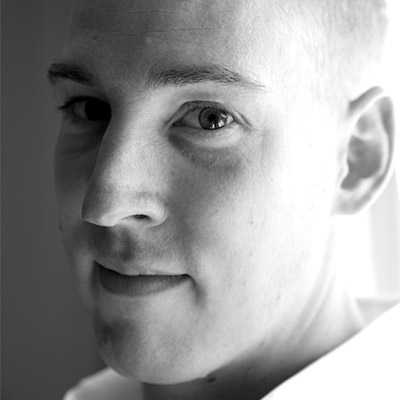
Live voyage thought a collection of low-level and advanced GPU programming topics with a focus on unconventional thinking. Starting with an interactive look at driving the CPU from the GPU: showing a GL based pipeline where shaders can write to a command buffer which the CPU executes, enabling GPU driven reconfiguration of resources and rendering pipeline. Exploring methods to use this kind of rapid development tool for manual run-time profile guided optimization. Continuing with a visual exploration of advanced filtering techniques for real-time ray based rendering, and methods to enable 1080p ray-march at 120Hz and beyond.
Timothy Lottes is a GPU focused developer with professional history at Epic, NVIDIA, Industrial Light & Magic, and a side track as a professional fine art landscape photographer.
Twitter: @TimothyLottes
Web: Blog
Graphics Programming Through the Ages
Michael Dille (the Madd Doc / cmucc) and Keith Bare (kbare / cmucc)

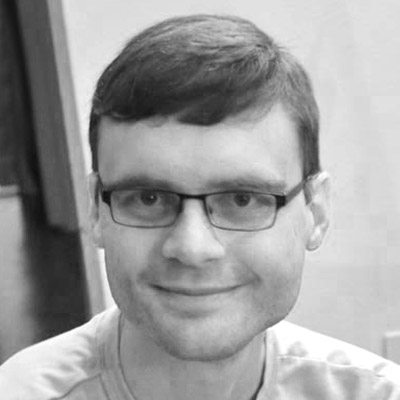
Many new computers over the years have generated great excitement with ever more powerful graphical abilities. To facilitate this, machine designers developed a variety of creative (if largely now arcane) programming interfaces that allowed software authors to squeeze impressive displays from scant computational resources, an art perfected by the demoscene.
This talk will focus on a few famous case studies such as the Commodore 64, the Amiga, and early PCs while exploring how each respective architecture influenced the style and appearance of demos on that platform.
This chronology of hardware history provides the context to then appreciate the evolution of demos from machine-specific skills demonstrations to immersive graphical simulations, reaching the modern emphasis on aesthetics and production while offering a nod to today's "low-fi" demoscene that retains a focus on pure programming challenge.
Dr. Dille is a Sr. Computer Scientist at SGT/NASA Ames Research Center where he designs space station hardware and works on the navigation system for an upcoming lunar rover mission. In his spare time, he tinkers with the many fun rabbit holes to be found in retrocomputing restoration and modding.
Mr. Bare is a filesystems developer at NetApp Pittsburgh, where he works on data mobility features of Clustered Data ONTAP. Outside of work, he participates in a variety of projects ranging from systems administration to FPGA hackery and plays oboe in several community music ensembles. Both are core members of cmucc, an American demo group that earned several first place rankings and hosts the Demosplash party at Carnegie Mellon University in Pittsburgh, Pennsylvania.
On Finishing Creative Projects
Thomas Mann (Pixtur / Still)
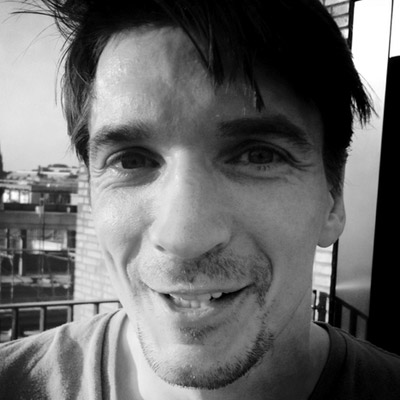
Building on his talk at GTC 2014, Thomas will talk about our creative design process for real-time animations. Especially on how to turn abstract ideas and concepts into moving images; make consistent design decisions; get inspired by programming on the way and how to tweak the look and timing into a finished product.
Tom was fascinated by computers even before owning one: He learned programming by writing assembler code on paper and testing it on a friend's East-German home computer. Soon thereafter he began developing computer games and tools on “real” computers. In his unsuccessful attempt to become less nerdy, he took classes in figure painting and attained a degree in architecture. With his student job, he became an expert in realtime graphics and was invited to SigGraph twice. His obsession with procedural computer graphics and motion design lead him to the demoscene, where he won many competitions and awards.
After a decade of freelancing as an interface designer and developer, he finally starting Framefield – a Berlin based design agency – to satisfy his love for computer graphics and design by spending as much time as possible with the best team he has ever met.
Twitter: @pixtur
Web: pixtur.com
Real Virtuality: Adventures in WebVR
Antti Jädertpolm (Fthr / TPOLM)
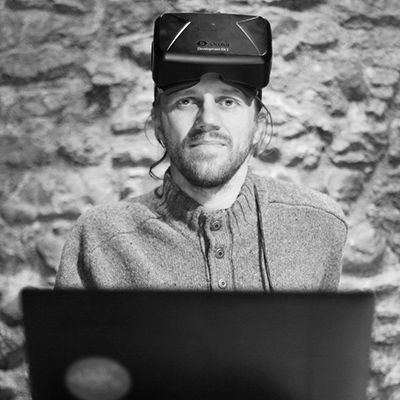
In this session, we will go over the brief history of online VR (WebVR) and what the future holds for the medium. We will showcase different frameworks and tools that are currently available and being used for WebVR and discuss how both businesses and art can benefit from it.
Antti will demonstrate how he has used VR to create unique demoscene related effects through his own visual programming interface and share his experiences with VR in general.
Fthr/TPOLM is a demoscene dude since 1994, making demos, graphics, music and programming.
On the artistic side, he's made a career in freelance illustration, mainly making artwork for electronic music artists (Kettel, Eedl, Lackluster, Sense, Ilkae among others).
On the business side, he's been involved in startups making innovative web platforms. 2005's Splice Music was the first online music sequencer, 2008's SongHi a gamified music learning platform and 2011 he founded Engi, a web-based visual programming tool for WebGL.
He is now the CEO of Vizor.io, a startup concentrating on WebVR.
Twitter: @fthr
Website: fthrproductions.com
Reinventing the Wheel - One Last Time
Ricardo Cabello (mrdoob)

- - Hey! Assembly is in 4 months! Do you want to do a demo for it?
- - Lets do it! Do you have new effects?
- - Hmm... Yeah. But I think we should do a new demosystem. The code for our last demo ended up a bit too messy.
- - Oh! Ok.
8 years later...
Ricardo Cabello (@mrdoob) is a self-taught computer-graphics programmer. Originally from Barcelona, Cabello began his professional career alternating between roles as a designer and developer. In his spare time, his involvement in the demoscene set him on the path to learning graphics programming.
Combining his background as a designer and expertise in development, his work ranges from simple interactive digital toys — Google Gravity, Ball Pool and Harmony — to full featured experiences — The Johnny Cash Project, The Wilderness Downtown and ROME.
Nowadays, Cabello spends most of his time developing open source libraries and tools — three.js, frame.js and stats.js — with the aim of making design and development simpler for everyone.
Twitter: @mrdoob
Web: mrdoob.com
Shadertoy Hackathon
Iñigo Quilez (IQ / RGBA) and Pol Jeremias
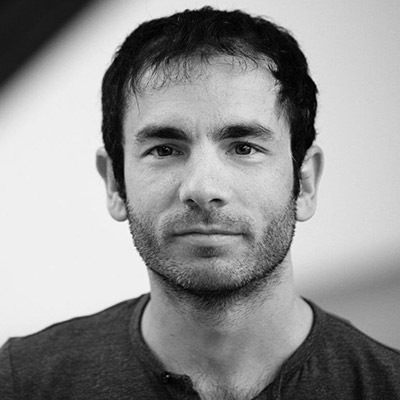
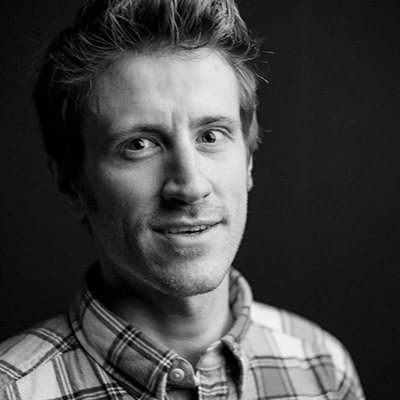
The founders of Shadertoy will host a hackathon where the audience is invited to participate. More info TBA!
Iñigo Quilez grew up as a teenager enjoying mountains, snow, sea and nature, but also programming fractals, graphics algorithms and all sort of visual experiments.
At the age of 18, right upon the discovery of the underground community called "the demoscene" and the potential of using code and maths to build beauty, he decided to focus all of his work and time into the creative side of computer graphics. After having finished his degree in Telecom Engineering, and having worked professionally in virtual reality and real-time rendering of massive data sets in Belgium for many years, he worked at Pixar Animation Studios in California during five years creating techniques and formulas to paint procedural landscapes and detail for the movies.
Iñigo recently joined Oculus where he works on bridging the worlds of real-time rendering, movie making and virtual reality. In his spare time, Iñigo co-founded Beautypi and the website Shadertoy, to which he also contributes with content regularly.
Pol Jeremias, originally from Barcelona, is an engineer based in San Francisco. At a very young age he developed an interest for computers and software development. This interest progressively became more focused on real-time rendering and interactive entertainment.
Upon finishing his studies at Universidad Ramón Llull, he moved to California to research computer graphics. He spent there his first year and after that, he decided to stay in the US and enroll a Master in Computer Science at University of Southern California. Shortly after graduating, he moved to San Francisco and started working at LucasArts, there he spent years working on rendering technology for Star Wars 1313. In April 2013, Pol joined SoMa Play, a game development studio.
Today, he is happily writing algorithms and technology for interactive entertainment. In his spare time, Pol co-founded Beautypi and Shadertoy.com.
Twitter: @iquilezles, @poljeremias, @shadertoy
Web: shadertoy.com
Textmode Is Awesome
Beausoleil Samson-Guillemette (BarZoule / Northern Dragons)

We'll be defining what a textmode demo is, and why we should care. From there, we'll have a look at what makes one go from good to great, design-wise. From content to colours to graphic style, these tiny choices can have huge impact.
We'll also see how your design can be dependent on your pixel-to-character converter. We'll cover the most popular approaches, both in colour mixing and subsampling, along with their forces and drawbacks.
If time allows, we'll look at what cool stuff has been or could be done with the extremely low resolution. Come along, we'll have a blast!
Having started making games at the age of 15, Beausoleil quickly learned any new skill set as required. Strong believer in DYI and self-teaching, he's now a game designer during the day, and makes demos at night. Demomaking allows him to play with any tech area he likes.
From fitting a drum'n'bass music in a couple of bytes, to 3d modeling or coding software renderer for ASCII output. He also runs the annual Text Mode Demo Competition and the Recursion demoparty in Montréal.
The Timeless Way of Building Geometry - How to create content with Signed Distance Functions
Johann Korndörfer (Cupe / Mercury)
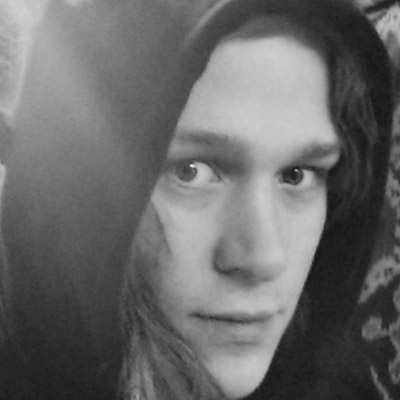
Good Signed Distance Functions define geometry by providing a semantic description that is very close to the essence of what the shape actually is - but that is almost completely lost when working with polygons or voxels, who solve the problem by throwing big amounts of data at it. Think vector graphics vs. pixels. As a result, SDFs can describe objects in an elegant way that makes variation, animation and last-minute changes trivial.
Since building good SDFs is not straightforward, this talk will focus on patterns that help with the modelling process by making it more structured, such as two different families of operators, debugging views, and assorted best practices that have helped us build last year's "the timeless" and other 64k and 4k intros. A very short introduction will show what a Signed Distance Function is (spoiler: a piece of code), what properties it should have and how it is commonly rendered. We will then probably spend most of the time live-coding SDFs and looking at their renderings, also covering limitations as well as issues that arise when rendering SDFs on graphics hardware such as optimizing rendering performance and shader compilation times.
Johann Korndörfer (cupe/mercury) is a graphics coder for the demogroup mercury. Having done some kind of computer graphics since his childhood, he found the proper outlet for this drive in the demoscene, where he is active since 2008. For his day job he works as a rendering engineer developing VR surgery simulators, while at night coding mostly for size-limited productions, as restrictions tend to stimulate his creativity.
Twitter: @cupe_cupe
Thinking Outside the Cartridge - Modern Ideas Applied to Archaic Devices
Jake Taylor (Ferris / Youth Uprising)
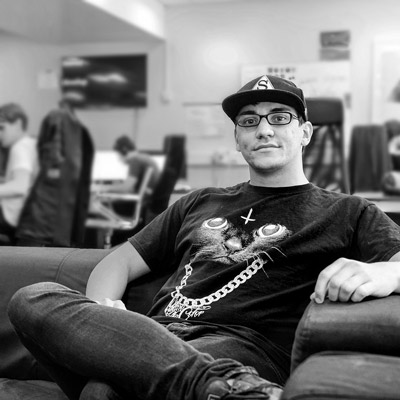
Ever wanted to make something that looks and sounds awesome with a gaming console you've played on your entire life? Ever wanted to build a proper, modern toolset to do so and experiment with functional programming at the same time? Then this talk is for you!
We'll take a look at two recent Super Nintendo demos, and, in particular, the ideas and methodologies applied when making them. First, we'll go over some of the details of the SNES' quirky hardware and the usual methods of making it tick. Building from there, we'll look at how most of this can be reduced to "simple" data processing, and how modern development techniques can be applied to make this simpler and more interesting.
All in all, this talk aims to show how applicable modern programming practices can be to unexpected problem domains, and how inspiring it can be to work with creative, out-of-the-box solutions. After all, a little ancient console dev never hurt anyone, right?
Hailing from the wilderness of northern Idaho, Jake Taylor has always had a knack for dissecting things and finding creative solutions to problems.
From a very early age he showed a deep interest in computers and electronics, and has been a dedicated software enthusiast and hacker for the better part of his young life. On the side, he also enjoys making electronic music and being a poster child for college dropouts everywhere.
Jake is currently located in Oslo, Norway, where he works at Fuse building the next generation of app development tools.
NVScene 2008 was his first demoscene event, and he's excited to return.
Twitter: @ferristweetsnow
Tips and Techniques For Efficient and Impressive Animations
Alexander Lehmann
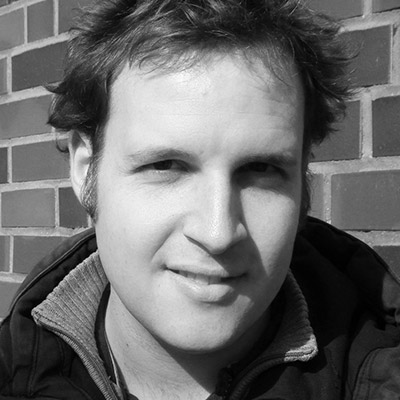
Creating animated short films, music videos and demos is an extremely complex process. Between a concept and the final release many fields of filmmaking and design needs to be mastered and applied.
In this session Alexander will show and explain the workflow which he developed to create impressive animations on a tight budget of both time and funds.
We will look at fun and time efficient processes and techniques that allows you to become a self-employed "one man 3D army". Alexander will also cover how he started his animation studio and how the demoscene has always played a role in it.
Alexander Lehmann entered the world of graphc design as a level designer and 3D modeler for games. After working as a professional freelancer on a series of well-known games (Unreal Tournament 2004, Crysis) and after finishing his apprenticeship as a Design Assistant his interrest shifted to short films and music videos.
In 2005 he began to study at the university of applied sciences in Kaiserslautern which he finished with a Bachelor Degree in 'virtual design'. In 2009 he worked as a digital artist at ImageEngine on “District 9”.
Since 2010 he has worked as a freelance filmmaker, directing and animating music videos (Noisia, Hybris) and short films and commercials (Deutsche Telekom).
Twitter: @alexlehmannfilm
Web: alexanderlehmann.net















